home | publications | my photos | historical pictures | travel snap shots | monuments | 19th century sources | research tools | links | contact
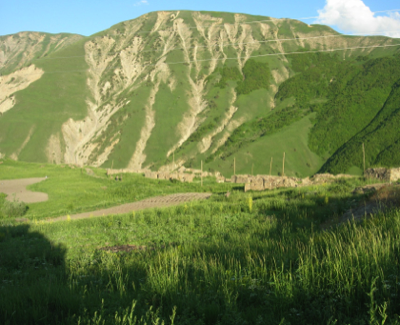
Kocanis (in English publications also spelled as Qodshanes or Kochannes; Turkish official name since 1960: Konak) is a village on a small mountain plateau some 20 kilometers North of the provincial capital of Hakkari in Southeastern Turkey.
At first glance it is just an “ordinary” Hakkari village. Like so many settlements in the area, it took its share from the wave of forced village evacuations during the war of the 1990s. The place is still uninhabited, except for some guards of the landowner. Most houses have crumbled away.
Kocanis for many centuries was the seat of the Patriarch of the Assyrian Church of the East (which also goes under other names like the “East (As)Syrian” or the “Nestorian” Church). In the early Middle ages the Assyrian Church of the East was responsible for spreading Christianity as far as India, China and Mongolia. Around 1400, in the time of the depredations of Tamerlane (Timur Lenk), the Patriarch of the Church with part of his followers retreated in the deep valleys of the Hakkari Mountains. Like the surrounding Kurds, the Assyrians had a tribal structure. The Patriarch or Mar Shimun was not only spiritual leader, but also the chief of the Assyrian tribes in the area.
The “discovery” of the Assyrians of Hakkari in 1829 by the German traveller and archaeologist Friedrich Schultz caused quite a sensation in the West. Soon representatives of different churches (Catholics, Anglicans, American Presbyterians) poured into the mountainous district to establish contact with the Assyrians. For some reason the Mar Shimuns preferred the British above others. An official liaison with the Anglican Church was made. Preceding World War I Mr Michael Browne, a British missionary, for more than 25 years resided in Kocanis as official representative of the Anglican Church.
The First World War brought a sudden end to the existence of the Eastern Assyrians in Hakkari. After the withdrawal of the Russian forces, they fled their mountain strongholds, never to return. Part of their descendants still live in neighbouring Iraq and Iran, others spread over the world. In Kocanis and other villages Kurds from the surrounding area settled.
General view of Kocanis, May 2005
the patriarchal church
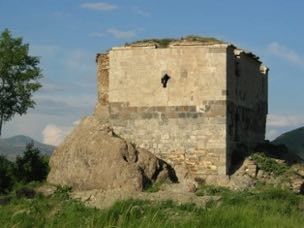
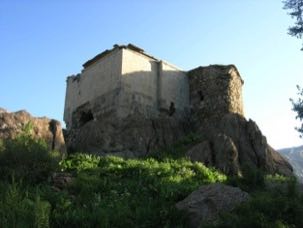
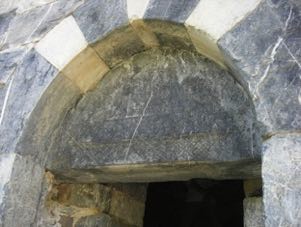
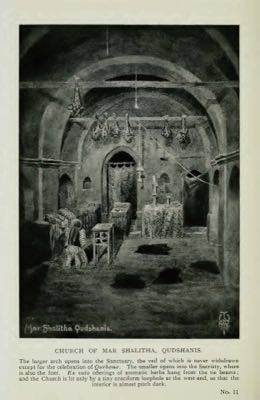
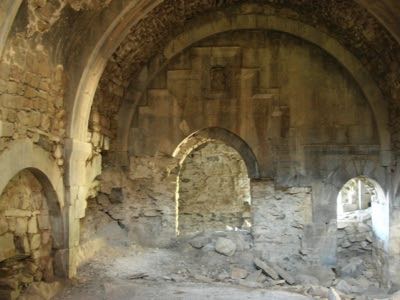
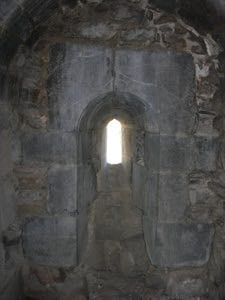
(source: Wigram & Wigram, The cradle of mankind, London, 1922)
The Interior of the Church shortly before the First World War (left) and nowadays (2005) (below)
The modest patriarchal church, devoted to Mar Shalita, is one of the only buildings still standing in Kocanis. It is in a reasonable condition, although treasure hunters have dug all over the place and caused damage to several parts of the structure.
bibliography
Probably few villages in Southeastern Turkey have been described in such detail as Kocanis. During the nineteenth century more than a dozen, mainly British, travellers undertook the long journey to the village, to meet the Patriarch and often to stay for days or weeks.
Note: When available titles are linked to digital copies available on the internet, move your mouse over the title to see the link.
19th century travel reports
1841
Asahel Grant, The Nestorians; or the lost tribes: containing evidence of their identity; an account of their manners, customs, and ceremonies; together with sketches of travel in ancient Assyria, Armenia, Media and Mesopotamia and illustrations of scripture prophecy
London (John Murray), 1841
on Asahel Grant:
• Laurie, Thomas. Dr.Grant and the Mountain Nestorians (Boston, 1853)
• Taylor, Gordon. Fever & Thirst: An American doctor among the tribes of Kurdistan, 1835-1944 (Chicago, 2005) (reviewed in Asahel Grant: the first American to fail in Iraq)
1842
William Francis Ainsworth, Travels and researches in Asia Minor, Mesopotamia, Chaldea and Armenia. London, 1842 (2 vols.)
William Francis Ainsworth, An account of a visit to the Chaldeans, inhabiting Central Kurdistán; and an ascent of the Peak of Rowándiz (Túr Sheïkhíwá) in the Summer of 1840, in: Journal of the Royal Geographical of London 11 (1841) pp.21-76
1852
George Percy Badger. The Nestorians and their rituals with the narrative of a mission to Mesopotamia and Coordistan in 1842-1844, and of a late visit to those countries in 1850; also, researches into the present condition of the Syrian Jacobites, Papal Syrians, and Chaldeans, and an inquiry into the religious tenets of the Yezeedees. London, 1852. 2 vols.
1853
Austen H. Layard, Discoveries in the ruins of Nineveh and Babylon: with travels in Armenia, Kurdistan and the desert: being the result of a second expedition undertaken for the trustees of the British Museum. (New York, 1853, London, 1853 and several later editions)
1878
E.L. Cutts, Christians under the Crescent in Asia. (London, [1878])
1884
1891
Mrs Bishop [= Isabella Bird], Journeys in Persia and Kurdistan, including a summer in the Upper Karun region and a visit to the Nestorian rayahs. London, 1891. 2 vols.
on this book: Terry Richardson, From Kochanes to Trebizond on a horse named Boy
1901
Earl Percy, Asiatic Turkey (London, 1901)
1901
F.R. Mansell, Central Kurdistan, in: the Geographical Journal 18-2 (1901) pp.121-144
1914
W.A. Wigram and E.T.A. Wigram, The cradle of mankind. Life in Eastern Kurdistan (London, 1914)
Kocanis, the Church, and and the Assyrians
on Western travellers to Hakkari in the 19th century
'Verheij, Jelle. Hakkari, "Westerners" and "Nestorians". European and American sources on the 19th century history of Hakkari'. Contribution to the Symposium "Hakkari in history (14-16/11/2014) organised by Hakkari University
Helga Anschütz, Mar Shallita. Die alte Patriarchatskirche von Qodschanes im Birgland von Hakkari, in: Kirios (1968) pp.13-23
Claudine Dauphin, Les églises nestoriennes du haute Hakkâri, in: Archéologica (July 1981)
August Thiry, Qudshanes in Hakkari
(Account of a visit in 2007)
İhsan Çölemerikli, Hakkari sûretleri. Sümbül Dağı’nda ayın doğuşunu izlerken (Diyarbakır, 2006, Lîs Yayınları)
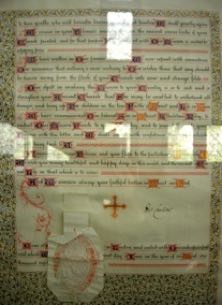
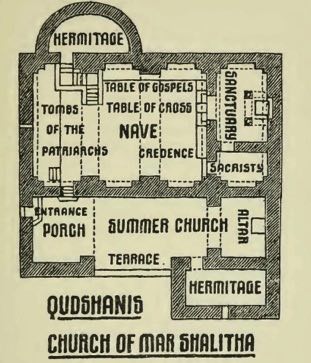
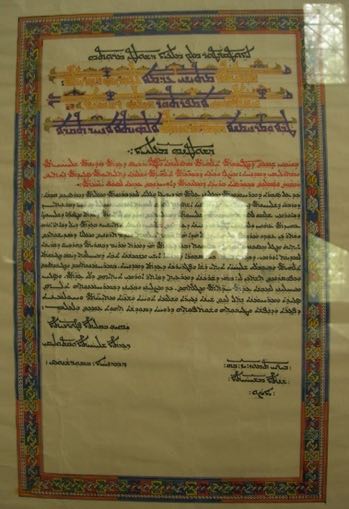
Letter of the Archbishop of Canterbury to the Patriarch of the Assyrian Church at Kocanis. English (below) ans Aramaic (right) (State Museum of Van)
left: Plan of the Kocanis Church (source Wigram & Wigram 1914)
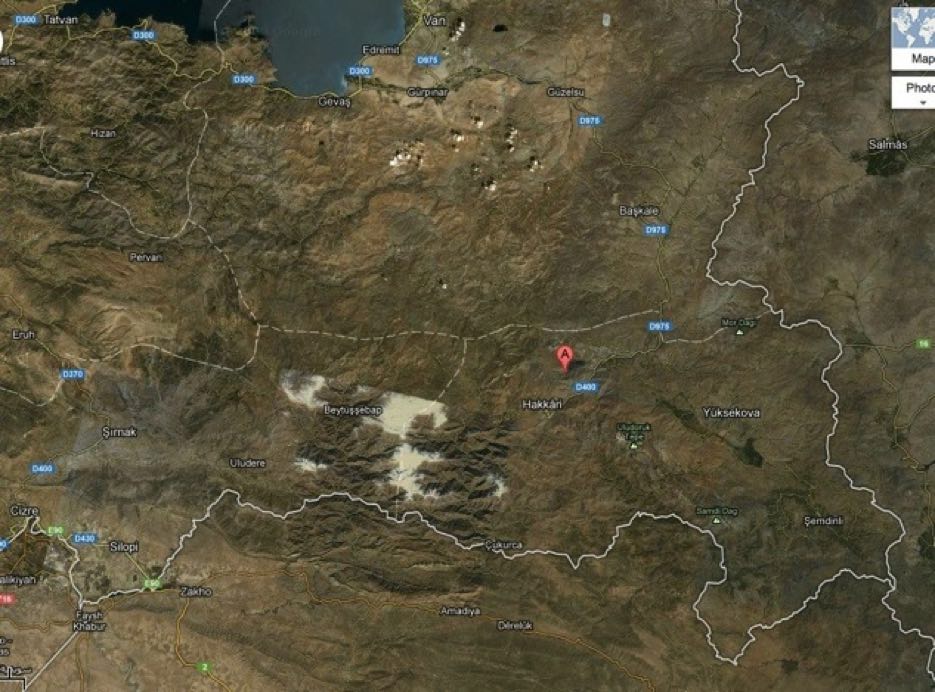
map
Patriarchal Church of the "Church of the East", Hakkari
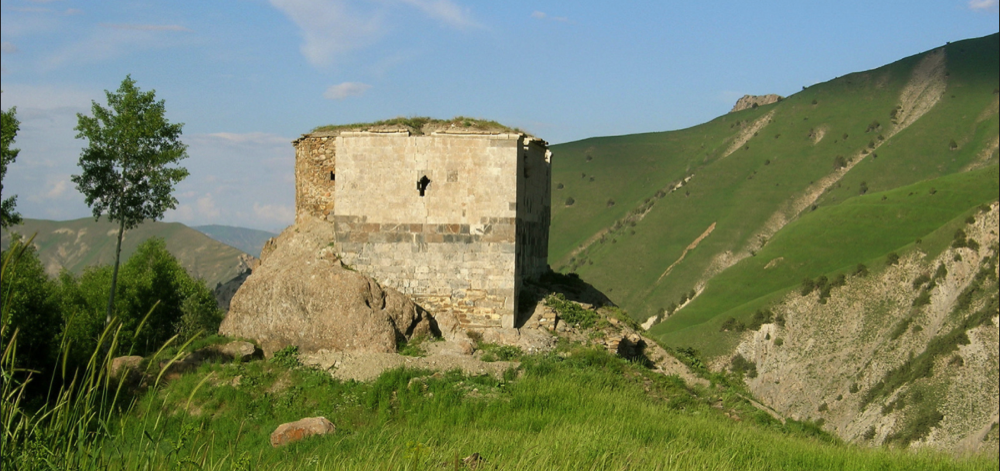
Jelle Verheij, 2005